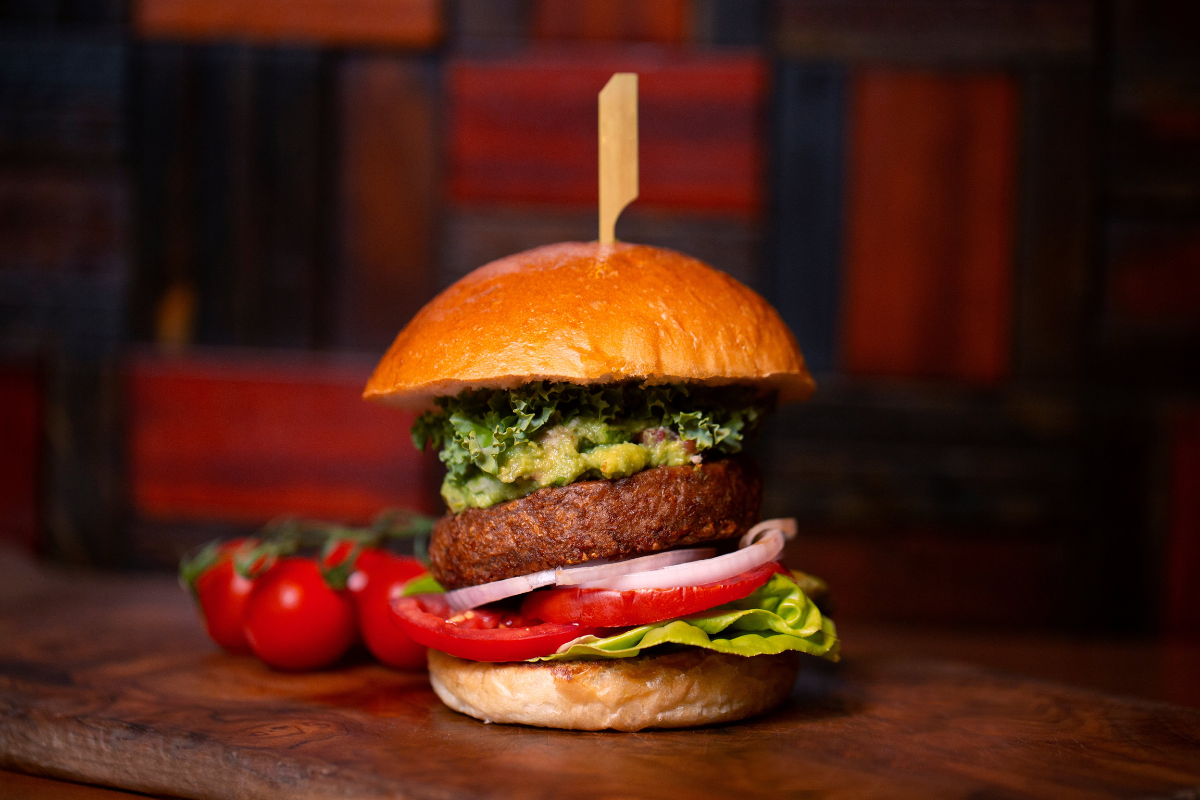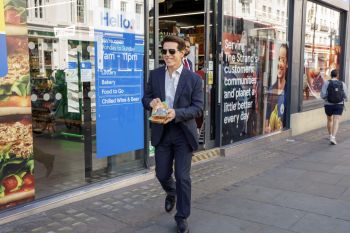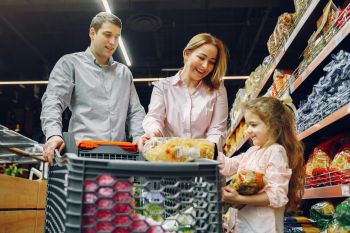
The Life Cycle of Beyond Burger vs. Beef Burger
The environmental burden of differing dietary choices and practices is highly debated. Most consumers are familiar with the journey of a burger patty to their plate: someone purchases the raw patty at a grocery store, prepares it at home, then places it (usually) between two buns and adds whatever toppings and condiments they so choose. However, the process that comes before–everything leading up to the patty being placed on grocery shelves–and after–the disposal and breakdown of packaging–is lesser known.
Many people agree that plant-based protein is less burdensome on the environment than animal protein. But this might obscure the possibility in many consumers’ minds that their favorite plant-based brands engage in unsustainable practices, for example, in the form of packaging or farming methods. That is not to dispute the impressive climate impact difference between producing 100 grams of peas versus 100 grams of beef, but rather, to underscore the need to relentlessly examine the full picture of plant-based brands and their sustainability efforts.
Beyond Meat’s Beyond Burger Life Cycle Assessment
Well-known plant-based brand Beyond Meat has an impressive life cycle assessment under its belt. Life cycle assessment (LCA) is an internationally recognized tool for evaluating a given product’s environmental load from said product’s “cradle to grave.” In the world of research, life cycle assessments comparing vegetable foods and animal foods tend to find consensus that, on average, vegetable foods are less polluting. That being said, the science is more inconclusive than one might expect. While advocates of plant-based eating would love to point to the literature that says, conclusively, that plant-based foods have categorically less burdensome life cycles than animal foods, it’s usually not that straightforward. Dozens of factors, such as soil quality and agricultural processes, post-processing, transportation, and more, all contribute to a food’s environmental impact. For example, a banana that traveled from Costa Rica to London might have a more polluting total life cycle than yogurt produced in Surrey and consumed by local residents.
Thus, the peer-reviewed life cycle assessment from the University of Michigan comparing Beyond Meat’s original burger to a ¼ of U.S. beef stands out in its stark win for the Beyond Burger. Beyond Meat’s website boasts the results, and their product came out on top in every category analyzed. The numbers speak for themselves: compared to a ¼ pound U.S. beef burger, Beyond Burgers generate 90% less greenhouse gas emissions (GHGE), require 46% less energy, have 99% less impact on water scarcity and 93% less impact on land use.
Unseized Opportunities for Improvement
The study, commissioned by Beyond Meat itself, compared the LCA of Beyond Burgers to that of meat burgers as informed by a 2017 life cycle assessment of meat burgers commissioned by the National Cattleman’s Beef Association, Sustainability Assessment of U.S. Beef Production Systems. The University of Michigan study’s abstract explains their goals to compare the life cycles of these burgers from cradle to distribution (retail outlets). Secondarily, the researchers state that they aim to reveal opportunities for Beyond Meat to improve upon environmental sustainability in their product and process.
The main ingredients in a Beyond Burger, including pea protein, canola oil, and coconut oil, each constitute considerable parts of the burger’s GHGE, but packaging is an even larger contributor. Namely, the plastic tray that holds each patty is a significant driver of a Beyond Burger’s GHGE. The scientists suggest an upgrade to the tray and estimate “that switching to a 8 polypropylene tray made of 100% post consumer recycled content could reduce the overall GHGE of the BB life cycle by 2% and reduce energy use by 10%.” As such, this 2017 study highlighted an opportunity that Beyond Meat has yet to take in 2022. Beyond continues to use the same packaging method for burger patties, although they did begin using a compostable tray for their line of sausages.
Value-Aligned Decisions in the Burger Aisle
When compared to scientific research, brand marketing tends to focus more on eye-catching numbers that generate sales. For example, the Beyond Meat marketing team obviously chooses phrasing that portrays their product as indisputably better than beef, even if consumers should be wary of extrapolating too much from such bold claims. And in light of recent reporting on Beyond’s “plummeting” stock and mold-contaminated US factory, damage control for the brand must be in the works. Focusing on life-cycle environmental impact can help recenter the conversation to sustainability. Doing just that, Beyond Meat’s scientists posted a December 16th TikTok video wherein one researcher pours the amount of water required to produce a Beyond burger on their head, after which another pours the equivalent amount required for a beef burger. In a striking visual display, the employee who poured the amount of water required to produce the beef burger got significantly–99% to be exact–more drenched.
It remains as important as ever to acknowledge the developing nature of research in the sphere of plant-based foods and climate change. Rather than harp on totally negative or totally positive portrayals of plant-based and animal foods, businesses and science alike must strive for greater transparency and collective action to produce more peer-reviewed, unbiased studies. This offers benchmarking and contributes to consumer knowledge so that brands can be encouraged toward the highest levels of sustainability. In the case of the University of Michigan LCA study, the plant-based option does reign superior for environmental impact. That should not stagnate Beyond Meat’s sustainability efforts, though, but instead serve to encourage further innovation in the space.


